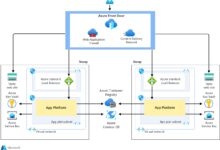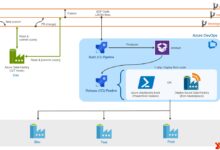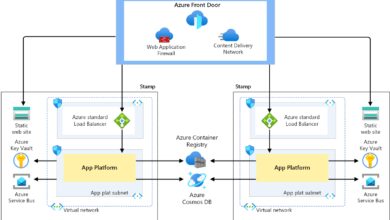Sign In to Azure: 7 Powerful Steps to Master Access Now
Want to sign in to Azure but not sure where to start? You’re not alone. Millions of users log in daily to manage cloud resources, deploy apps, and secure data. This guide breaks down everything you need to know—step by step.
Sign In to Azure: Understanding the Basics

Before diving into the technical steps, it’s crucial to understand what signing in to Azure actually means. Microsoft Azure is a cloud computing platform that allows individuals and organizations to build, test, deploy, and manage applications and services through Microsoft-managed data centers. To access these powerful tools, you must first sign in to Azure using valid credentials.
What Is Azure and Why Sign In?
Azure provides a wide range of services including virtual machines, databases, AI tools, and networking solutions. Signing in grants you access to the Azure portal—a centralized dashboard where you can monitor resources, configure settings, and manage subscriptions. Without signing in, you can’t interact with any of these services.
- Azure supports public, private, and hybrid cloud models
- Signing in authenticates your identity and authorizes access
- The portal is accessible from any device with internet connectivity
According to Microsoft, over 95% of Fortune 500 companies use Azure for at least one critical business function. This makes understanding how to sign in to Azure an essential skill for IT professionals and developers alike.
Different Types of Azure Accounts
Not all Azure accounts are the same. The type of account you have determines your access level and the resources you can manage. Common account types include:
- Work or School Account: Used in enterprise environments, managed through Azure Active Directory (Azure AD)
- Microsoft Account (MSA): Personal accounts like Outlook.com or Hotmail used for individual Azure subscriptions
- Guest User: External collaborators invited to access specific resources within an organization’s tenant
Each of these requires different authentication methods when you sign in to Azure. For example, a work account might require multi-factor authentication (MFA), while a personal Microsoft account may only need a password and recovery email.
“Authentication is the foundation of cloud security. If you can’t securely sign in to Azure, nothing else matters.” — Microsoft Security Whitepaper, 2023
How to Sign In to Azure: Step-by-Step Process
Now that you understand the basics, let’s walk through the actual process of how to sign in to Azure. Whether you’re a beginner or refreshing your knowledge, this step-by-step guide ensures you won’t miss a beat.
Step 1: Navigate to the Azure Portal
The first step is visiting the official Azure sign-in page. Open your preferred web browser and go to https://portal.azure.com. This is the primary entry point for all Azure services.
- Ensure you’re using a supported browser (Chrome, Edge, Firefox, or Safari)
- Clear cache if you encounter login errors
- Bookmark the page for future access
Microsoft recommends using Microsoft Edge for optimal performance due to deep integration with Azure AD and security features like Defender SmartScreen.
Step 2: Enter Your Credentials
On the sign-in screen, enter the email address, phone number, or Skype ID associated with your Azure account. This could be your corporate email (e.g., user@company.com) or a personal Microsoft account (e.g., user@outlook.com).
- Double-check spelling to avoid typos
- Use the ‘Remember me’ option only on personal devices
- Avoid public computers for sensitive logins
If you’re part of an organization, your admin may have enforced conditional access policies that restrict sign-ins based on location, device compliance, or risk level.
Step 3: Complete Authentication
After entering your username, you’ll be prompted for additional verification. This depends on your account configuration:
- Password + SMS code
- Password + Authenticator app notification
- Fingerprint or facial recognition (via Windows Hello or biometric devices)
- Security key (FIDO2 compliant)
Multi-factor authentication (MFA) is now standard for most enterprise tenants. It significantly reduces the risk of unauthorized access—even if your password is compromised.
Common Issues When Signing In to Azure
Despite its reliability, users often face challenges when trying to sign in to Azure. These issues range from forgotten passwords to network restrictions. Let’s explore the most frequent problems and how to resolve them.
Forgot Password or Locked Account
One of the top reasons users can’t sign in is a forgotten password or a locked account due to multiple failed attempts. Azure integrates with self-service password reset (SSPR) to help users regain access quickly.
- Click ‘Can’t access your account?’ on the login screen
- Verify identity via email, phone, or security questions
- Reset password and log back in
Organizations can customize SSPR settings in Azure AD. Admins can enforce password complexity rules and define which methods users can use for recovery.
MFA Prompt Not Received
Even with the correct password, users sometimes don’t receive their MFA prompt. This can happen due to:
- Poor mobile signal or disabled notifications
- Outdated authenticator app
- Incorrect phone number on file
To fix this, ensure your contact info is up to date in My Profile. You can also configure backup methods like alternate email or hardware tokens.
Location or Device-Based Access Restrictions
Many companies use Conditional Access policies to enhance security. These policies can block sign-ins from:
- Unrecognized geographic locations
- Non-compliant devices (e.g., outdated OS)
- Untrusted IP addresses
If you see an error like ‘Access has been blocked by conditional access policies,’ contact your IT administrator. They can review sign-in logs in the Azure portal under ‘Azure Active Directory > Sign-ins’ to diagnose the issue.
“Over 99.9% of compromised accounts lacked multi-factor authentication.” — Microsoft Digital Defense Report, 2023
Security Best Practices When You Sign In to Azure
Signing in to Azure isn’t just about access—it’s about doing so securely. With cyber threats on the rise, following best practices is non-negotiable for protecting sensitive data and infrastructure.
Enable Multi-Factor Authentication (MFA)
MFA adds an extra layer of protection beyond just a password. When enabled, users must verify their identity using at least two of the following:
- Something you know (password)
- Something you have (phone or security key)
- Something you are (biometrics)
Microsoft reports that enabling MFA blocks over 99.9% of account compromise attacks. It’s one of the most effective security measures available.
Use Conditional Access Policies
Conditional Access is a core feature of Azure AD that allows administrators to enforce access controls based on specific conditions. For example:
- Require MFA for users accessing from outside the corporate network
- Block legacy authentication protocols (e.g., IMAP, SMTP)
- Enforce device compliance for mobile access
These policies are configured under ‘Azure Active Directory > Security > Conditional Access’ and provide granular control over who can sign in to Azure and under what circumstances.
Monitor Sign-In Activity Regularly
Regular monitoring helps detect suspicious behavior early. The Azure portal provides detailed sign-in logs that show:
- Timestamp of each login attempt
- IP address and location
- Authentication methods used
- Success or failure status
Admins can set up alerts for unusual activity, such as logins from high-risk countries or multiple failed attempts. This proactive approach minimizes damage from potential breaches.
Advanced Methods to Sign In to Azure
Beyond the standard web portal, there are several advanced ways to sign in to Azure, especially useful for developers, DevOps teams, and automation workflows.
Using Azure CLI (Command-Line Interface)
The Azure CLI is a powerful tool for managing Azure resources from the terminal. To sign in:
- Install the CLI from Microsoft’s official site
- Run the command
az login - A browser window will open for authentication
Once authenticated, you can run commands like az vm list or az group create to manage resources programmatically.
Using Azure PowerShell
Azure PowerShell offers similar functionality for Windows administrators and scripters. To get started:
- Install the module via
Install-Module -Name Az - Run
Connect-AzAccount - Authenticate through the pop-up window
This method is ideal for automating repetitive tasks and integrating Azure management into existing PowerShell scripts.
Service Principals and Managed Identities
For applications and services that need to sign in to Azure without human interaction, service principals and managed identities are used.
- Service Principal: An identity created for an app or service to access Azure resources
- Managed Identity: Automatically managed by Azure, eliminating the need to store credentials
These are essential for secure automation, CI/CD pipelines, and serverless architectures. You can create them via the portal, CLI, or ARM templates.
“Automation should never come at the cost of security. Managed identities remove the risk of hardcoded secrets.” — Azure Architecture Center
Managing Multiple Azure Subscriptions
Many users work with more than one Azure subscription—perhaps one for development, another for production, or separate ones for different clients. Knowing how to manage them after you sign in to Azure is key to efficient cloud operations.
Switching Between Subscriptions
After signing in, you can switch between subscriptions using the subscription filter in the Azure portal:
- Click your account name in the top-right corner
- Select ‘Switch directory’ or ‘Change directory’
- Choose the desired subscription from the dropdown
In Azure CLI, use az account set --subscription "Subscription Name" to switch contexts.
Setting Default Subscription
To avoid confusion, set a default subscription so that commands run against the right environment:
- In CLI:
az account set --subscription "My Default Sub" - In PowerShell:
Select-AzSubscription -SubscriptionName "My Default Sub"
This is especially helpful when running automation scripts or deploying templates.
Role-Based Access Control (RBAC)
Rbac ensures users only have access to the subscriptions and resources they need. Roles like ‘Reader,’ ‘Contributor,’ and ‘Owner’ can be assigned at the subscription level.
- Assign roles via ‘Access control (IAM)’ in the portal
- Use least privilege principle to minimize risk
- Review access regularly with Azure AD Access Reviews
Proper RBAC configuration prevents accidental deletions or unauthorized changes across subscriptions.
Sign In to Azure from Mobile Devices
With remote work on the rise, being able to sign in to Azure from mobile devices has become increasingly important. Whether you’re troubleshooting an issue on the go or reviewing resource usage, mobile access adds flexibility.
Using the Microsoft Authenticator App
The Microsoft Authenticator app isn’t just for MFA—it also allows you to view and approve sign-in requests, check account activity, and even access the Azure portal in a limited capacity.
- Download from iOS App Store or Google Play
- Add your work or personal account
- Approve push notifications for MFA
It also supports passwordless sign-in, allowing you to use biometrics instead of typing credentials.
Accessing Azure Portal on Mobile Browsers
While the full Azure portal experience is desktop-optimized, you can still perform basic tasks on mobile:
- Visit portal.azure.com on your phone
- Use responsive design to navigate dashboards
- Monitor alerts, check VM status, or restart services
However, complex operations like deploying templates or editing network configurations are best done on a desktop.
Security Considerations for Mobile Access
Mobile devices are more vulnerable to loss or theft. To protect access:
- Enable device encryption
- Use strong PINs or biometrics
- Configure conditional access to block jailbroken or rooted devices
Additionally, consider using Intune or another Mobile Device Management (MDM) solution to enforce security policies across company-owned or BYOD devices.
Sign In to Azure: Future Trends and Innovations
The way we sign in to Azure is evolving rapidly. As cyber threats grow more sophisticated, Microsoft continues to innovate in identity and access management.
Passwordless Authentication
Passwords are increasingly seen as a weak link in security. Microsoft is pushing toward a passwordless future using:
- Windows Hello
- FIDO2 security keys
- Microsoft Authenticator app
Users can now sign in using biometrics or push notifications, reducing phishing risks and improving user experience.
Identity Protection and Risk-Based Access
Azure AD Identity Protection uses machine learning to detect risky sign-in behaviors. It can automatically:
- Flag logins from anonymous IPs
- Detect impossible travel (e.g., login from US and UK within minutes)
- Trigger MFA or block access based on risk level
This dynamic approach adapts to threats in real time, offering smarter protection than static rules.
Integration with Zero Trust Frameworks
Zero Trust is a security model that assumes no user or device should be trusted by default. Azure plays a central role in Microsoft’s Zero Trust architecture by enforcing:
- Continuous verification
- Least privilege access
- Device health checks
Organizations adopting Zero Trust use Azure AD as the foundation for identity-centric security.
How do I sign in to Azure if I forgot my password?
If you forget your password, click ‘Can’t access your account?’ on the Azure sign-in page. Follow the prompts to verify your identity using alternate contact methods like email, phone, or security questions, then reset your password securely.
Can I sign in to Azure without MFA?
It depends on your organization’s policies. While personal Microsoft accounts may not require MFA, most enterprise environments enforce it for security. Admins can configure MFA requirements in Azure AD.
What should I do if I’m blocked from signing in?
If you’re blocked, check if your account is locked due to multiple failed attempts or if conditional access policies are preventing login. Contact your administrator or use self-service password reset to regain access.
Is it safe to sign in to Azure on public Wi-Fi?
It’s not recommended. Public networks are vulnerable to eavesdropping. Always use a trusted network or a virtual private network (VPN) when accessing Azure from unsecured locations.
How can I automate sign-in for scripts and apps?
Use service principals or managed identities for automated access. Avoid storing credentials in code. Managed identities are preferred as they are automatically rotated and managed by Azure.
Signing in to Azure is more than just entering a username and password—it’s the gateway to a world of cloud innovation and digital transformation. From understanding account types to mastering advanced authentication methods, this guide has walked you through every critical aspect of securely accessing Azure. Whether you’re a developer, administrator, or business user, following best practices like enabling MFA, monitoring sign-ins, and adopting passwordless authentication will keep your environment secure. As Microsoft continues to evolve Azure’s identity platform with Zero Trust and AI-driven protection, staying informed is key. Now that you know how to sign in to Azure confidently, you’re ready to unlock the full power of the cloud.
Further Reading:









